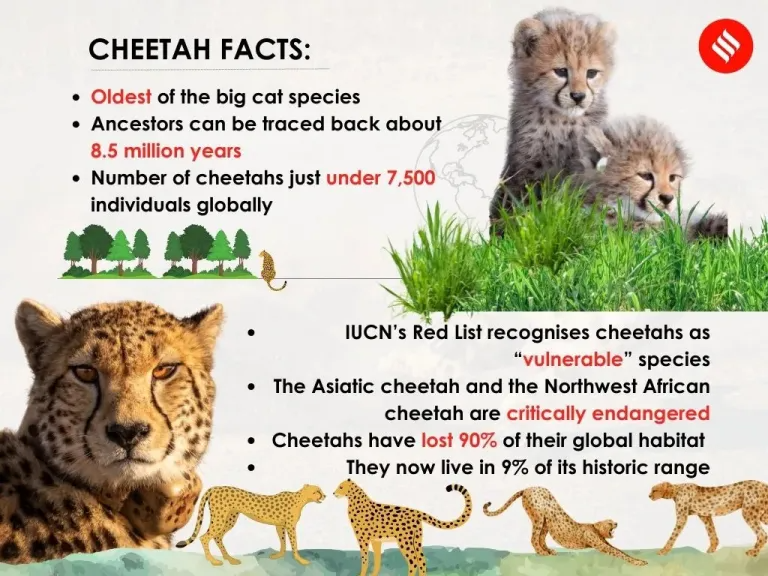Project Cheetah Faces Challenges After Two Years
Why in the news?
Project Cheetah, marking two years since its launch, faces challenges with cheetah deaths, inadequate prey, and habitat issues, raising questions about its long-term success and conservation strategy.
Project Cheetah Overview:
- Launched to establish a stable, breeding population of African cheetahs in India.
- Aims: to restore open ecosystems like savannahs, grasslands, and degraded forests.
- Involves translocating African cheetahs to Kuno National Park, Madhya Pradesh.
Challenges and Current Status:
- Of 20 translocated cheetahs, 8 have died; 24 cheetahs (12 adults, 12 cubs)
- Key challenges: inadequate prey base, attacks, and tick infestations.
- 17 cubs were born, but 5 have perished.
Brief Historical Timeline of Project Cheetah:
- Ancient History: Cheetahs were recorded in India as early as 200 BCE in Greek records.
- During the Mughal period, Emperor Akbar had 1,000 cheetahs for hunting.
- Extinction: The last spotted cheetah in India died in 1948, and the species was declared extinct in 1952.
- Maharaja Ramanuj Pratap Singh shot the last three surviving cheetahs.
- Reintroduction Attempts: Initial plans in the 1970s with Iran failed, as did attempts in
- 2020: South African experts visited four potential reintroduction sites.
- 2022: Project Cheetah was officially launched by India’s Prime Minister.
About Project Cheetah:
- First intercontinental large wild carnivore translocation project, aimed at reintroducing cheetahs to India, extinct since the
Status of Project
- First Batch (8 cheetahs from Namibia, Sept 17, 2022):
- 6 have died; 14 remain in captivity.
- Future action: Possible radio-collaring and release in winter. Additional sites like Gandhi Sagar and Nauradehi Wildlife Sanctuaries are being prepared.
- Second Batch (12 cheetahs from South Africa, Feb 18, 2023):
- 3 of 4 cubs born in India have died. 1 cub is hand-reared.
Associated Article:




